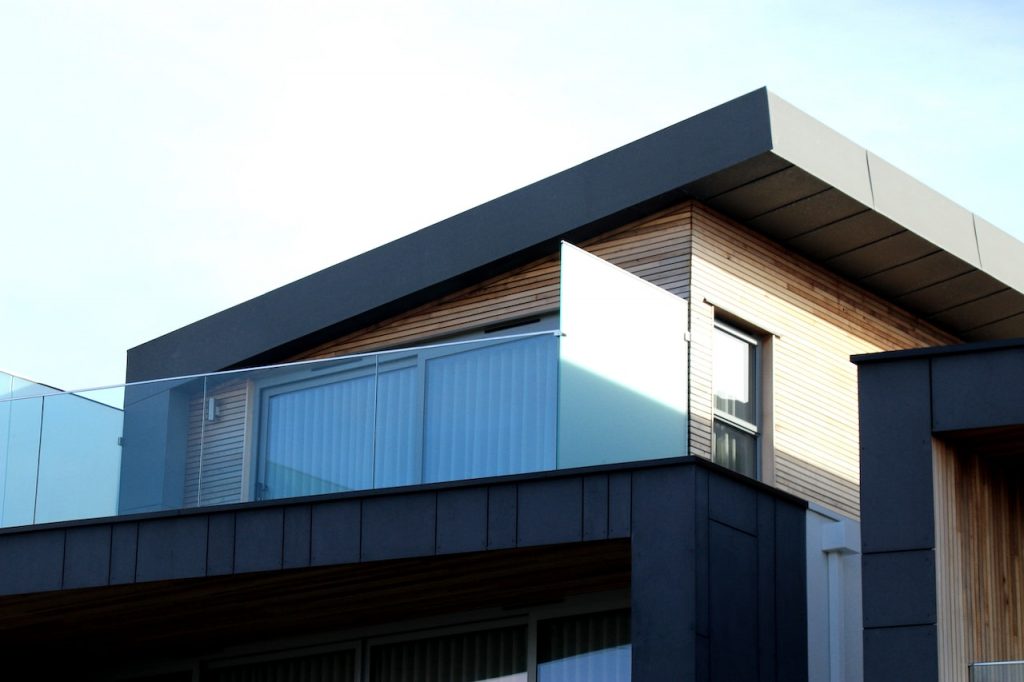Today, you will see a lot of flat rooftops on malls, warehouses, residences, and schools. Because it is simple to construct over large areas, this roof style is ideal for commercial, industrial, and institutional institutions.
However, flat roofs are actually less frequently used in home construction because its low pitch absorbs rather than sheds water. Climates with high precipitation or snowfall may not be suitable. As such, for efficient water drainage, all flat roofs have a slope of 5 to 15 degrees.
Now, you may wonder if a flat roof works for your house–the simple answer is: yes! Read on to discover everything you need to know about residential flat roofs.
Flat Roofs Offer a Modern Appearance
Homes with flat roofs offer a distinct appearance. A flat roof can complement the surrounding landscape or urban landscape without blocking views.
Flat Roofs Offer More Space
Flat roofs are more practical than steeply sloped roofs. This allows for the installation of a rooftop garden, patio, or green roof. Flat roofs make solar panels easier to conceal and install.
Design considerations will be required for any of these applications (such as guardrails and other safety precautions, or heavier materials to accommodate roof traffic and weight). Special licenses from the local building authority may be required, although doing so may result in a new housing feature.
Flat Roofs Are Highly Functional
Flat roofs are a cost-effective solution for residential use due to decades of use in commercial flat roof construction, modern roofing materials, and application procedures.
Homeowners may expect years of dependable performance by selecting the suitable materials, hiring an expert to design and install the flat roof, and committing to routine inspection and maintenance.
Flat Roofs Are Best for Dry Climates
Flat roofs are preferable in drier climates, although with improved waterproof materials and building processes, a well-installed flat roof can be a good alternative in rainy climates.
The 4 Varieties of Flat Roofs
1. Built Up Roofing (BUR)
This multilayered roof style can be traced back several generations. BUR is a low-slope residential and commercial flat roof.
This type of flat roof is made with asphalt and roofing felt alternate layers. By covering the final asphalt layer with gravel or crushed minerals, it is protected from UV radiation, fireproofed, and given additional weight to maintain the roof membrane.
2. Single-Ply Membranes
These membranes are a single-layer, watertight alternative to traditional built-up flat roofs. They take less time and are 10% to 20% more expensive than other approaches. The thicknesses of single-ply membranes are 45, 60, 80, and 90 mils.
They often come in massive rolls and may require the use of heavy gear because they are put in a single layer across vast roofs.
3. Thermoset (Synthetic Rubber)
Thermoset is a type of flat roof that is made with Ethylene Propylene Diene Monomer (EPDM). EDPM is a flexible, weather- and UV-resistant synthetic rubber that makes up 40% of all commercial roofing systems.
4. Thermoplastic
Thermoplastic is an earth-friendly flat roof due to its lack of chlorine use. It is also sun-reflective, fire-resistant, long-lasting, and impenetrable.
Conclusion
Be it for a dreamy beach home or a modern city home, a well-built flat roof can help you achieve what you want. A flat roof is also great for extra space, such as a venue for a sunset gathering with close friends or family. With that being said, the possibilities are endless! If you want to get a flat roof, it’s time to collaborate with the professionals.
Are you looking for roofing companies in Saskatoon? Wilderness Roofing is an expert team that can handle your roofing needs in a timely and skillful manner. Contact us today!

